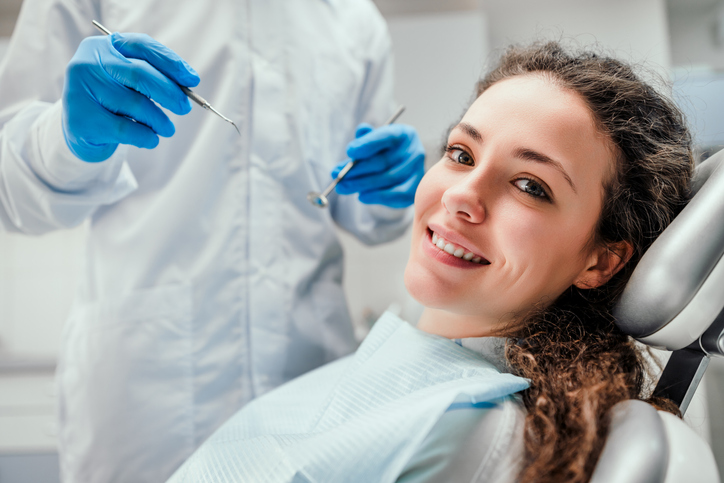Orthodontic treatment
I encourage you to read about my understanding of the scope of orthodontic activities in the "Orthodontics" tab, where you will also find general information about the content of our website regarding orthodontics.
Orthodontic treatment uses the natural ability to rebuild our body, replace cells, and regenerate tissues. However, in this case, this is done in a planned and controlled way by the doctor after a detailed diagnosis of the system and determining the aim of orthodontic correction.
The goals of orthodontic treatment are: aesthetics (whose aims are usually defined and reported by the patients themselves) as well as function (problems with speech, food consumption, and here most often patients are referred by dentists or speech therapists). It is currently known that the scope of orthodontic intervention is much broader. It concerns the functioning of the temporomandibular joints and muscles associated with chewing and articulation (read in the "Occlusion" tab). This, in turn, affects the respiratory tract (sleep, concentration span, memory, hormonal balance especially related to circadian rhythm) as well as the muscular balance of the body (muscle tension and pain, postural defects).
Orthodontic treatment should be preceded by a detailed orthodontic diagnostics (more on this in the "Information for new patients" tab). After discussing the goal and methods of treatment, and agreeing on all the conditions, orthodontic correction can be started.
Due to the fact that orthodontic treatment is significantly related to particular periods of the body development (especially in the area of the facial part of the skull) and has an impact on this development, this relationship should be taken into account during diagnosis and treatment planning.
The development of jaw bones and teeth proceeds in several basic stages. From birth to the age of 3 years old, milk teeth erupt and the formation of the temporomandibular joint begins (a significant impact of the feeding method which allows the child to suck while developing individual structures of the masticatory organ as well as the position of the head while laying the child to sleep affecting the development of the facial bone of the skull part ). During this period, the chewing function also develops during the transition to solid foods (the articular pit and a articular disc are formed , which are not present at the time of the child's birth) and speech (which develops especially the action of the facial muscles). Around the age of 5 the first exchange period of teeth begins and lasts up to about 8 years of age. During this time, the upper and lower incisors exchange for permanent teeth (it should be noted that these are the teeth of an adult in a child's mouth, which means that some crowding may occur during this period, which is perfectly normal and also stimulates jaw bones to grow), the first permanent molars also appear (in order to obtain their correct position, it is important that the milk molars survive as long as possible until they are naturally replaced between 10 and 13 years of age). Teeth do not exchange between 8 and 10 years of age and the jaw bone system grows, so this is the best period for the first "serious" orthodontic control in terms of proper development of the masticatory organ and a possible start of treatment with fixed braces. Between 10 and 14 years of age is the most important period in terms of jaw bone development and shaping the correct system. During the second phase of tooth exchange (canines and premolars) and growth spurt (puberty), the final development of the masticatory organ occurs. Orthodontic check-ups should take place during this period every 6 months, especially in cases where there are any doubts as to the correct development of the jaw bone system or teeth alignment. This is the best time to start early treatment with fixed appliances (if necessary) because of the possibility of using, during treatment, the natural growth of jaw bones during this period. After the period of tooth replacement, orthodontic treatment is also possible because the ability of bone to remodel is always possible in every living organism.
The diagnostic and therapeutic procedure is discussed in the tab "Information for new patients. At this point, I would like to mention the latest research, which shows that it is most beneficial for orthodontic correction to ensure the proper development of the masticatory organ and use a system of small forces that most effectively and safely rebuild jaw bones. The selection of removable and fixed braces should be tailored to the intended treatment goal and patient's age (more in the 'Information for new patients' tab).
A lot of practical information - for example: what to look for in particular periods of development, when the first visit to the orthodontist should take place - is included in the "Frequently asked questions" tab.

